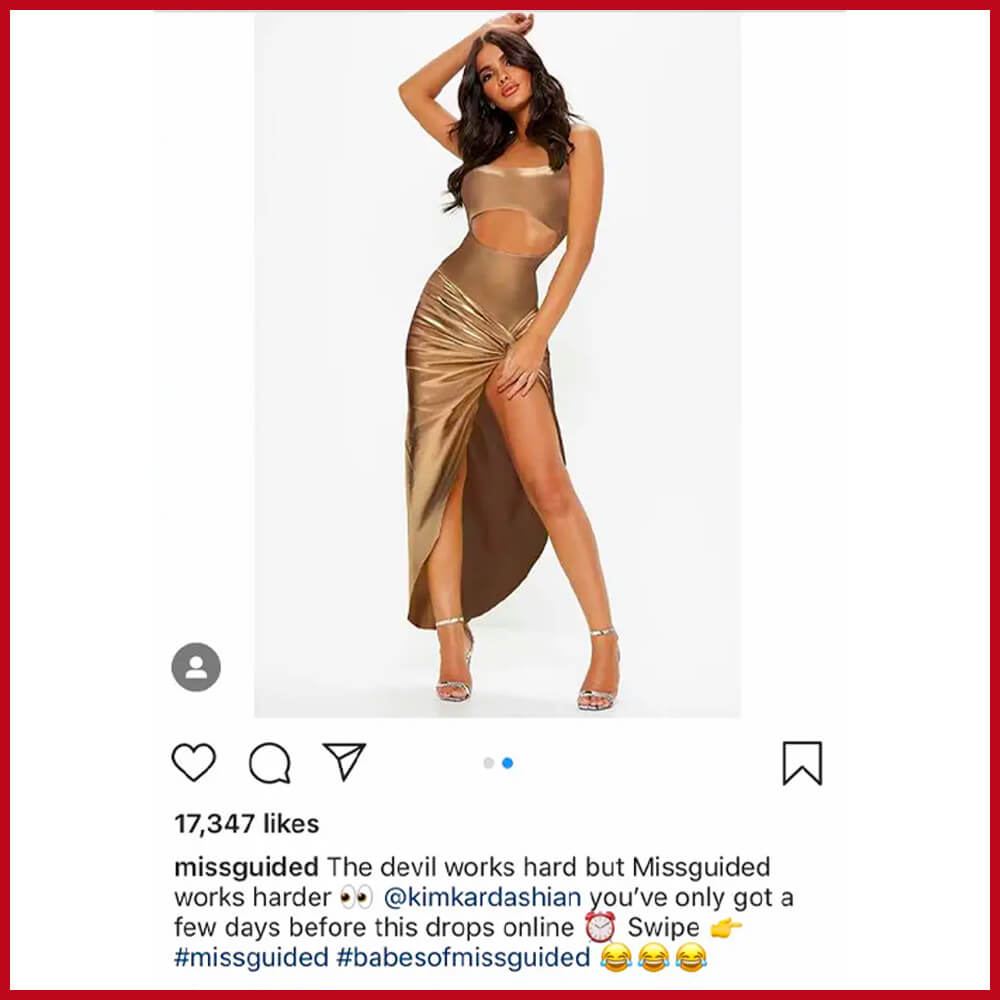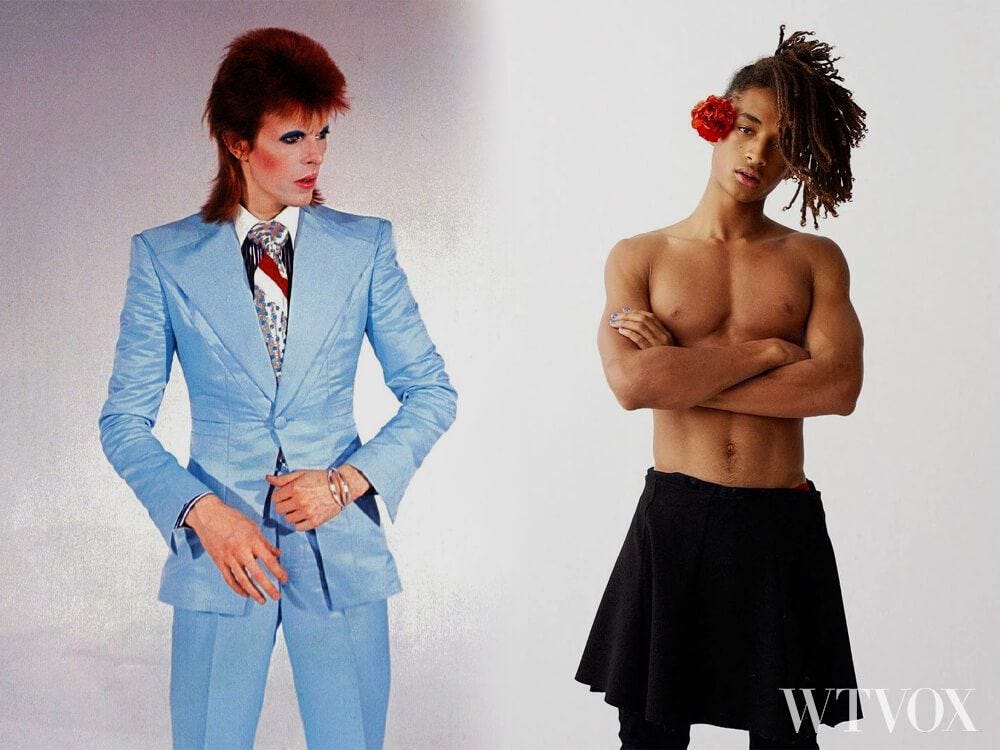If you Google the term ‘fast fashion’, several definitions pop-up.
Unfortunately, most of these explanations are either incomplete, confusing, or wrong.
In this article, I’ll show you the origin of fast fashion, and what it really means.
I’ll follow up with some great examples of fast fashion brands and their actions.
Finally, I’ll detail the problems caused by fast fashion, such as modern slavery, pollution, and waste.
Without further ado:
What Is Fast Fashion?
“Fast fashion is a term used to describe a highly profitable business model based on replicating catwalk trends and high-fashion designs, and mass-producing them at low cost. The term ‘fast fashion’ is also used to describe the products of the fast fashion business model generically.”
The financial success of the fast fashion model is attributed to its speedy process.
Fast fashion definition.
For instance, a designer label requires, on average, approx. six months to create and launch a new collection.
On the contrary, a fast-fashion label requires less than a month to find, copy and replicate a collection.

Fast fashion business model.
Moreover, social media has reinforced the fast fashion model.
In the past, fast fashion brands had to attend catwalks or recourse to the printed magazine and fashion spies to obtain original creations.
Nowadays, with fast fashion brands having armies of people scouting celebrities on Instagram 24/7, the copying process is instant.
Once a new (unique) designer pieces land on social media, the scouts start the ‘stealing’ process.
Designs are collected and sent for approval.
If the style is deemed financially sound, the copying-replicating process begins.
In less than a month, millions of copies are created and shipped all over the world.
While not illegal, the business model is seen as unethical for using child labour, supporting modern slavery, and unsustainable practices that generate a significant amount of waste and pollution.
Fast Fashion Problems
Fast fashion companies thrive on “low-cost uber-fast” cycles of copying, manufacturing, transportation, and merchandising.
The standard turnaround time of six months, from the catwalk to consumer, is compressed to a matter of mere weeks.
But, while very fast, the fashion business model comes with a world of problems.
1. Stealing and Copyright Issues
“Nowadays, anyone, anywhere, could spot a fresh style, copy and sell it, without consequences or having to follow the classic hierarchy of fashion.” – Rebecca Minkoff.
In some ways, social media has strengthened the fast fashion industry.
However, in the case of fast fashion brands, social media allows them to steal everything that sells.
Fast fashion copyright issues.
From high-end designers to emerging ones, nobody’s safe.
Able to copy, manufacture, and ship in mass, fast fashion giants are the first to market the latest designs, long before the original creator does.
Even worse, as often there are several fast fashion companies targeting the same design, the original creator is lost in the process.
2. Reckless Pollution and Waste
Beyond the ripping off of other’s work, fast fashion creates severe ecological and ethical problems.
A recent report highlighted that over 87 per cent of fast fashion brands are sourcing materials and labour from China, India, Pakistan, and Turkey, with serious consequences for the environment.

Every year, 85 per cent of all textiles produced in the world end up in landfills.
Moreover, from all fast fashion giants investigate, only Zara and H&M have proper waste management and recycling policies in place.
Granted, not everybody can afford to dress like a celebrity, with the price tags straight off the catwalks of London Fashion Week.
But that’s not an excuse to let fast fashion companies deplete, pollute, and destroy the environment with millions of copies that almost always end up in the landfills.
“In relation to the planet and the fashion industry, the fast fashion business model is a parasite that depletes the body. Fast fashion does not create anything new or useful; its only role is to copy and multiply, again and again. In the process, it depletes vital resources and creates waste, to a point when there’s nothing left and the body dies“, explains Laurenti Arnault, CEO of Wardrobe of Tomorrow, a highly curated marketplace dedicated exclusively to sustainable designers from all over the world.
While purse-friendly, fast fashion comes at a cost, somewhere else…
Discarded clothes to landfills in million tones – by 2060.
The high speed of manufacturing required by fast fashion creates further issues relating to low wages and poor working conditions.
3. Modern Slavery
Low-cost manufacturing requires not only low-cost materials but also cheap labour.
According to a survey by ‘Fashion Checker’, 93% of fast fashion brands are not paying garment workers a living wage.
To keep manufacturing costs low, fast fashion brands have moved production to the developing countries…

The true cost of fast fashion – modern slavery in developing countries.
..where labour is unethical, inhuman in what media describes as cases of modern slavery in fast fashion.
4. Throwaway Culture
According to a former Topshop brand director:
“Girls see a celebrity wearing something and want it immediately,”
For the fast fashion business model to thrive, the creation of trend-relevant products designed to trigger one’s impulsive buying behaviour is key.

As a result of the ‘throwaway culture’, compared to 20 years ago, we purchase clothing twice more, while keeping them half as long. (Drew & Yehounme, 2017)
Moreover, for the cycle to continue, the fast fashion business model employs a ‘planned obsolescence’ strategy, as described by Guiltinan (2009).
“Limited functional life design and options for repair, aesthetics that lead to reduced satisfaction, design for transient fashion or enhancement that requires purchasing of new product features. Fashion, more than any other industry in the world, embraces obsolescence as a primary goal; fast fashion raises the stakes.”
However, as soon as the trend ends, these “low quality – low price” products are discarded by consumers in a process called ‘the throwaway culture’.
According to The Guardian, one in three young women, the biggest segment of fast fashion consumers, consider garments worn once or twice to be old.
Examples Of Fast Fashion Brands
Here are some of the most popular fast fashion conglomerates known to shamelessly steal and replicate designs:
1. Missguided
Missguided peaked media attention when it got embroiled in a scandal with Kim Kardashian-West.
It started when Kim took to social media to condemn fast fashion brands for stealing designers’ work.
Kim posted on Instagram a pic wearing a dress made by Kanye, pleading:
“Going through old fitting pics & found this gold look that Kanye made for me, for my Miami trip last summer. I went w the neon vibes instead. P.S. fast fashion brands, can you please wait until I wear this in real life, before you knock it off?“
Almost immediately, the fast-fashion giant replied on their Instagram acc:
“Kim Kardashian you’ve only got a few days before this drops online!“

At first look, Missguided’s reply could be interpreted as a joke.
Yet, this was not the first time when Missguided copied and replicated Kim’s style.
The fast fashion brand had been reposting Kim’s Instagram snaps – with its own logo on – several times.
It also featured on its Instagram page many photos of Kim and Kanye West, like memes, aiming to make it look like the celebrities were endorsing the brand.

And, to top it up, the British fast-fashion giant created a ‘Crushin’ on Kim K‘ section on its online marketplace.
The section held looks worn by Kim Kardashian, paired with the brand’s cheaper alternatives.
The stealing got so bad that Kim had no alternative but to take the fast fashion brand to court.
“Missguided has used Kardashian’s name and likeness in conjunction with its brand. In the process it has violated trademarks around her name, which has been used to advertise company’s own products.”
Immediately, Missguided’s post – in which the company says it’ll have an identical dress in a few days – was removed from their Instagram account.
Then, the fast fashion giant followed with a statement:
“Any action based on online banter would be meritless. Missguided shoppers know the score; we’re about the celeb looks, for people without their bucks. For the record, as much as we love her style, we’re not working with Kim on anything.”
Needless to say, Kim Kardashian won the case against Missguided.
Nevertheless, the stealing continued…

…but, with different celebrities this time!
2. Old Navy by GAP
Another case that sparked media attention was Old Navy vs Carrie Anne Roberts, a single mom British designer, creator of the clothing brand Mère Soeur.
One day, Roberts found out that Old Navy is selling a copy of her most popular T-shirt, for half the original price.
The t-shirt has “Raising the Future” printed across the chest and is one of Roberts’s best-selling products.
On Old-Navy’s official website, the knock-off was identical.
Infuriated, Roberts posted the Old Navy dupes to Instagram, lamenting about being copied by such a huge brand.
“Big businesses see small businesses like mine as idea generators and nothing more. But the idea behind this t-shirt has inspired my whole business. It is my business. Now, stripped of all its meaning, it feels violating,” said Roberts.
After over 800 comments of support, many from people who also left angry comments on Old Navy’s Instagram posts and negative reviews on Old Navy’s website, the fast fashion contacted Roberts.

In their email, Old Navy was arguing that Roberts didn’t trademark the phrases “Raising the Future” or “The Future.”
Therefore, she does not have a trademark for the font or the t-shirts’ graphic design and accordingly, zero legal rights.
However, the continuous social media backlash helped Roberts to fight the fast fashion giant.
After days of being swatted with criticism, Old Navy removed the copy from its official website.
Moreover, in an email to Roberts, Old Navy state that no additional orders – for the disputed t-shirt – would be placed.
3. ZARA
Zara, a Spanish fast-fashion giant has a laundry list of its own.
In the past, the company was caught creating copies of Balenciaga sneakers and Kanye West’s coveted Yeezys.
Zara has also ripped off pins from illustrator Tuesday Bassen, and replicated sandals by designer Aurora James of Brother Vellies.

Weekly Newsletter. Sign Up Now!
Celebrities, designers, and latest news in sustainable fashion.
4. Fashion Nova, Forever 21, …
Apart from Missguided, the ‘Gap-owned’ Old Navy, and ZARA, there are several other fast fashion companies stealing and selling designs.
Some of the biggest ones are Forever 21, Boohoo, Fashion Nova, Asos, Pretty Little Thing, and Nasty Gal.

Here’s a quick recap of how these fast fashion brands got caught for stealing in the past:
- Forever 21 was caught imitating phone cases, popular feminist tees, Instagram-famous swimwear, and even coats from a Fashion Fund finalists.
- Boohoo, a British fast-fashion conglomerate that’s facing modern slavery allegations was caught several times stealing unique creations from independent designers.
- ASOS is known for copying styles from luxury brands, adding 4,000 new styles to its site, every week!
Final Words
The fast fashion business model is a serious problem that impacts the environment, people, and animals.
New business models such as circular or slow can be adapted to match consumer needs.
For that to become a reality, we need media awareness and people like you, pushing for a better world.
| WTVOX – Voicing the Future of Fashion
For similar content delivered directly to your inbox, subscribe to our weekly newsletter. |
If you liked my article on fast fashion, here’s your turn to contribute:
- What is your take on the fast fashion business model?
- Can you name another fast fashion brand that I’ve missed in this article?
- Can sustainable and nature-friendly help fast fashion business model?
- Where do you discard your fast fashion clothes?






